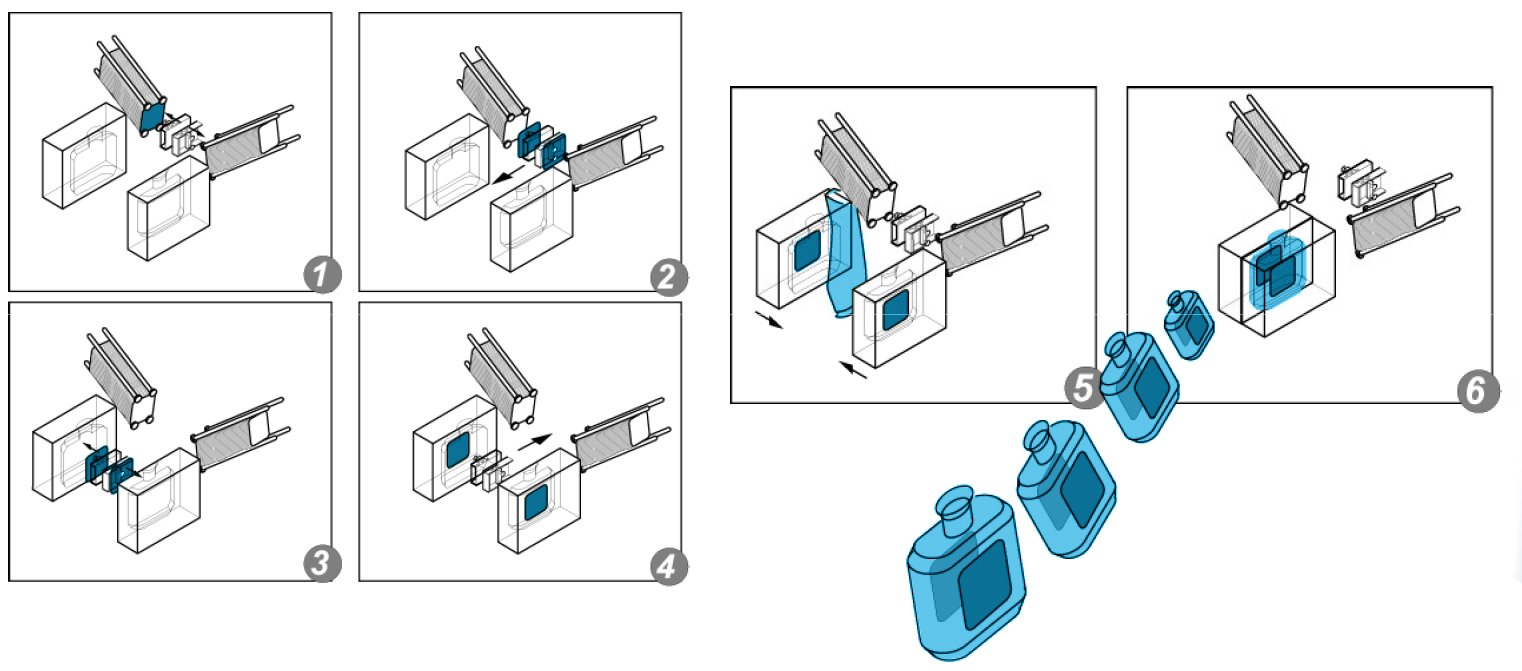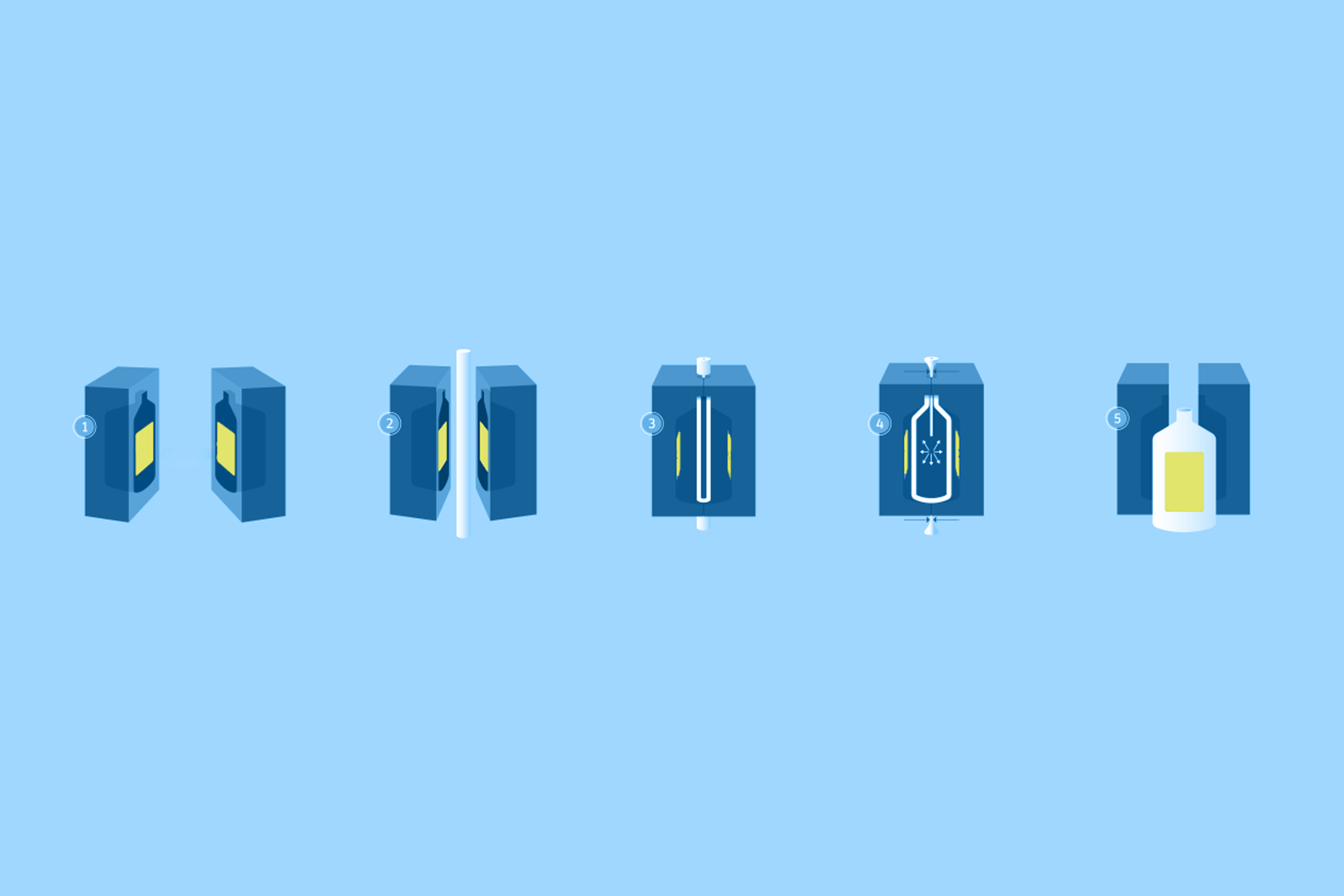The In-Mould Labelling term refers to the label application system onto plastic containers by applying them inside the mould before the forming stage. Subsequently, during the parison blowing phase inside the mold, fusion of the label with the packaging takes place.
The label becomes an integral part of the final product. The result of the IML system is a packaging already decorated during blowing.
What technology is used to decorate the labels? What is the decorative output?
The printing processes are multiple: from flexography, rotogravure, silkscreen and offset technology to the digital printing. The choice of the technology used defines the output quality that can achieve perfect photographic reproduction.
The IML system developed by Techne consists of placing the labels inside mold cavities right before the blowing operation.
The operating principle involves a system of arms (electro-mechanical robots) complete with grippers equal to the number of mold cavities.
The IML cycle is divided into the following steps:
At the start of the molding cycle, the grippers pick up die-cut labels from the label baskets.
After the picking phase, the arms move longitudinally towards the interior of the mold. The latter are equipped with suction channels that allow the labels to stick to the surface of the mold cavities.
The labels are usually made of plastic material that during the blowing phase gets in contact with the extruded parison and melts. The label is incorporated into the walls of the container. Therefore the mold opens and the in-mold-labeled packaging is ejected, ready to be used.

Why choose the IML technology?
IML is a process that does not require specific additional equipment in contrast to other alternative decorations such as Pressure Sensitive Labeling, Heat Transfer and Sleeves.
For this reason, it can be considered the most sustainable labelling method.
For example IML does not require:
- Post-mold labeling machines;
- Additional wet or hot melt glue;
- Additional workers to operate the labeling machines;
- Extra floor space for the conveyor belt and labeling machines;
In fact, an in-mould labeled container comes out from the blow molding machine with its label already embedded in the plastic container wall. Nothing else is needed to make the packaging ready to be filled.
All other labeling methods require post-mold operation before or after the filling stage and some of them might also need a release liner. In terms of sustainability, IML involves less energy consumption and labor preferring renewable resources.
Techne IML main features:
The In-Mould Labelling system has been designed and consolidated over the years by Techne keeping in mind some key concepts:
- Loading of label baskets without downtime;
- System flexibility to use labels of any size;
- Ease of use and intervention by the operator;
- Fast size change;
- System reliability to ensure repeated label placement over time.
Advantages of IML labels:
Recyclable and sustainable
To make the label it is possible to use the same plastic material used to produce the bottle. In this way the final and already decorated packaging can be totally recycled.
Perfect label adhesion to the bottle. Non-removable label
The In-Mold Labelling allows a perfect adhesion to the packaging that is maintained even in the case of product spillage during the filling phase. Futhermore, thanks to this technology label edges do not lift over time because the label, once applied, is no longer removable.
Label with screen printing effect
Without any labels edges, an In-Mould-Labelled product shows a smooth seamless surface. The label is incorporated in the packaging assuming the character of a glossier and screen-printed appearance.
Precise application
The IML system is designed to apply the label to the packaging very precisely. No more crooked labels with folds.
To deepen the IML topic, contact us for a focused advice.












Leave a comment